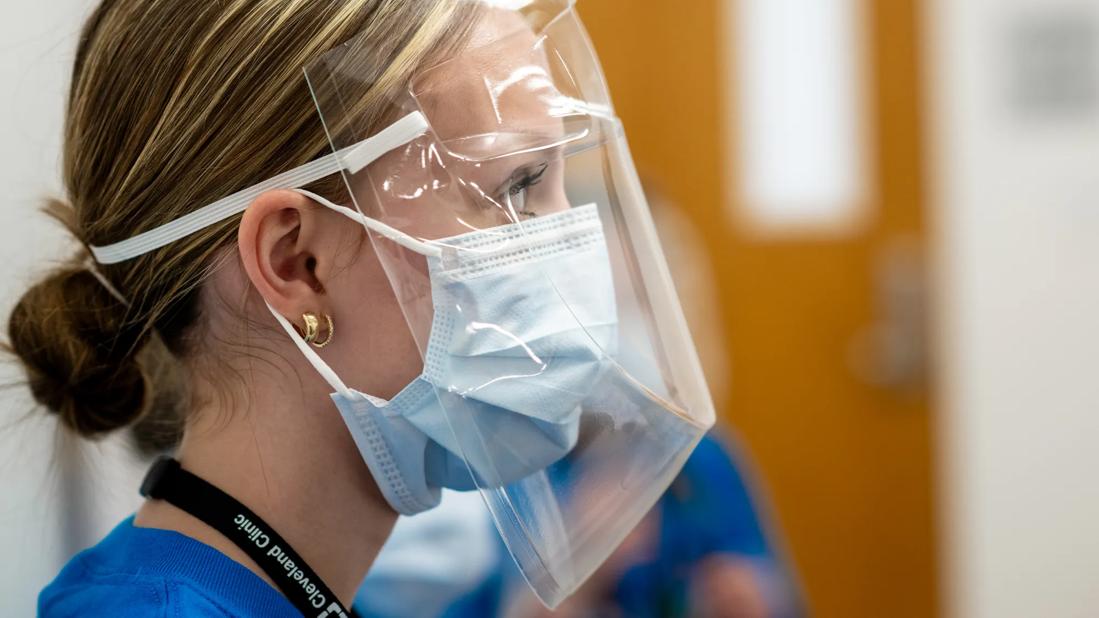New decontamination system will be used to create emergency stock

The COVID-19 pandemic is an evolving situation, and as healthcare institutions prepare for a potential surge of patients, Cleveland Clinic continues to take measures to safeguard its supplies of personal protective equipment (PPE). Cleveland Clinic is in the process of creating a multi-platform PPE disinfection solution, which will include collaboration with Battelle Memorial Institute, in anticipation of a surge of COVID-19 patients.
Advertisement
Cleveland Clinic is a non-profit academic medical center. Advertising on our site helps support our mission. We do not endorse non-Cleveland Clinic products or services. Policy
The Battelle Critical Care Decontamination System™ (CCDS) is a self-contained, mobile decontamination system that uses vapor phase hydrogen peroxide (VPHP) to decontaminate PPE. In a 2015 feasibility study, Battelle Memorial Institute found that N95 filtering face piece respirators maintained >99% filtration efficiency without degradation to head strap elasticity for more than 20 decontamination cycles in its CCDS.
On March 29, 2020, Battelle received Emergency Use Authorization from the U.S. Food and Drug Administration (FDA) to rapidly develop its CCDS systems and work with hospitals to decontaminate PPE following use during the COVID-19 pandemic.
“We currently have adequate supplies, which we will need to continue to use appropriately to protect staff and caregivers at highest risk,” states Mark Taylor, MD, Chair of Enterprise Surgical Operations and anesthesiologist at Cleveland Clinic. “As an added measure to further conserve PPE, we are asking caregivers to help us collect certain items of used PPE, which we will disinfect and store as an emergency reserve stock.”
Beginning March 30, Cleveland Clinic is collecting used PPE at Cleveland Clinic Ohio hospitals for decontamination. At PPE donning and doffing stations in these hospitals, there are two trash bags for proper PPE disposal: one is clear and the other is orange. Caregivers discard PPE worn below the clavicle (gown and gloves) into the clear plastic bag, and PPE worn above the clavicle (i.e., face shield, N95 mask and eyewear) in the orange bag. Items placed in the orange bag include single-use PPE (i.e., items worn once and discarded) as well as items worn multiple times throughout one shift. The orange bags will be collected for decontamination.
Advertisement
“Besides our work around PPE, we have taken a number of recent measures, such as limiting visitor access into our facilities, rescheduling routine office appointments as telehealth visits, postponing nonessential surgeries and procedures, promoting social distancing within our facilities, screening caregivers for fever prior to their shifts, and rapid testing for symptomatic caregivers to ensure the safety of patients and caregivers throughout Cleveland Clinic,” says Dr. Taylor.
Advertisement
Advertisement

Patients report improved sense of smell and taste

Clinicians who are accustomed to uncertainty can do well by patients

Unique skin changes can occur after infection or vaccine

Cleveland Clinic analysis suggests that obtaining care for the virus might reveal a previously undiagnosed condition

As the pandemic evolves, rheumatologists must continue to be mindful of most vulnerable patients

Early results suggest positive outcomes from COVID-19 PrEP treatment

Could the virus have caused the condition or triggered previously undiagnosed disease?

Five categories of cutaneous abnormalities are associated with COVID-19